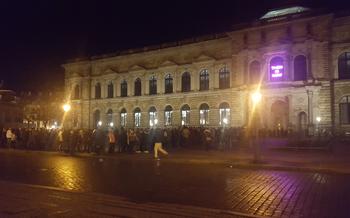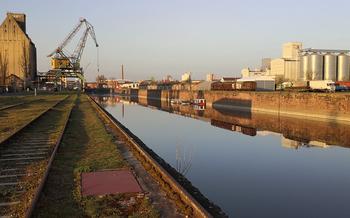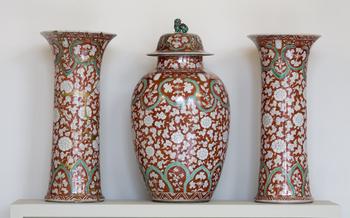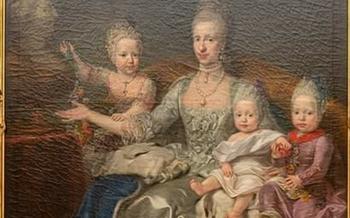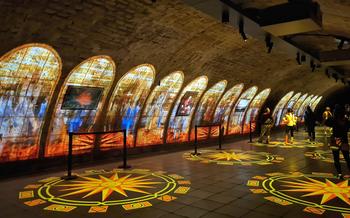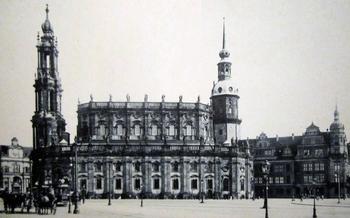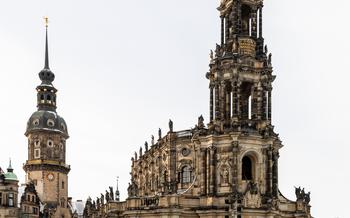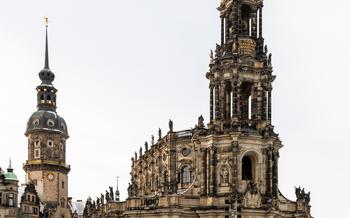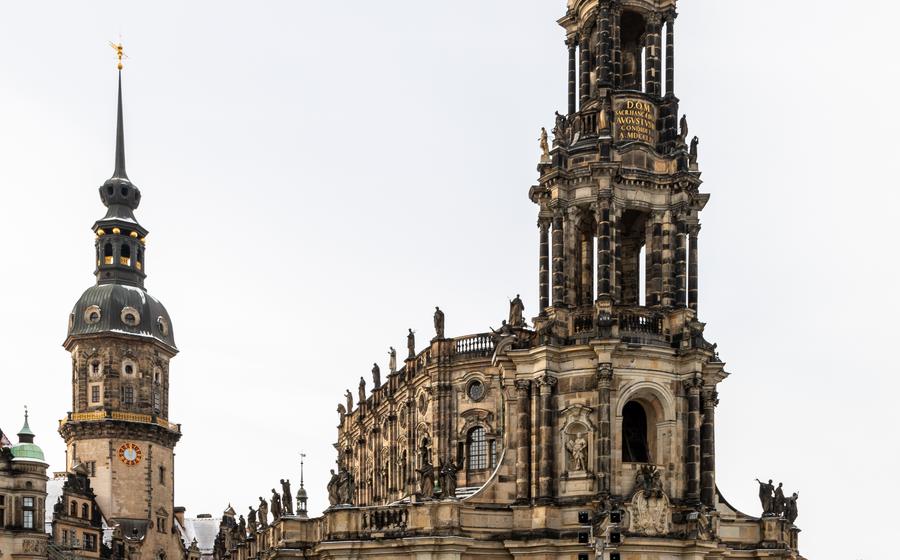
Katholische Hofkirche Dresden Cathedral
- Delving into the History of Katholische Hofkirche Dresden Cathedral
- Architectural Masterpiece
- Hofkirche's Interior Grandeur
- Symbol of Resilience
- A Royal Place of Worship
- The Altarpiece and Its Stories
- The Organ's Melodious Symphony
- A Haven for Art and Music
- The Crypt and Royal Burials
- Guided Tours and Audio Guides: Unveiling the Hidden Stories
- Visiting Information
- Dress Code and Etiquette
- Nearby Attractions
- Tips for Photographers
- Insider Tip: Unveil the Hidden Beauty
Delving into the History of Katholische Hofkirche Dresden Cathedral
The Katholische Hofkirche, also known as the Dresden Cathedral, stands as a testament to the rich architectural heritage of Germany. Its history dates back to the 18th century, when it was commissioned by Augustus III, Elector of Saxony and King of Poland, as a grand expression of his Catholic faith. The cathedral was designed by the renowned architect Gaetano Chiaveri, who infused it with the opulent Baroque style that was prevalent during that era. Constructed between 1738 and 1755, the Hofkirche became a symbol of the grandeur and power of the Saxon monarchy. Its striking architectural features, intricate interior decorations, and historical significance make it a must-visit attraction in Dresden, inviting visitors to embark on a journey through time.
Architectural Masterpiece
The Katholische Hofkirche stands as a testament to the grandeur of Baroque architecture, showcasing an intricate facade that captivates the eye from afar. Its elegant dome, adorned with intricate carvings and statues, rises majestically above the city skyline, symbolizing the church's spiritual significance. The interior of the Hofkirche is equally impressive, with its soaring ceilings, opulent decorations, and exquisite works of art. Every inch of the cathedral's interior is adorned with intricate details, from the marble floors to the elaborate ceiling frescoes, creating a sense of awe and wonder for visitors. The Hofkirche's architectural masterpiece is a harmonious blend of grandeur and spirituality, leaving an indelible impression on all who behold it.
Hofkirche's Interior Grandeur
Stepping inside the Katholische Hofkirche is like entering a realm of opulence and artistic splendor. The cathedral's interior is a testament to the Baroque era's extravagance, adorned with intricate details that captivate the senses. The magnificent high altar serves as the centerpiece of the sanctuary, adorned with exquisite sculptures and intricate carvings that narrate biblical stories with lifelike precision. The altarpieces, with their vibrant colors and gilded accents, depict scenes from the life of Christ, adding a touch of divine grandeur to the sacred space.
The ceiling frescoes, painted by renowned artists, are a symphony of color and movement, drawing the eyes upward to admire the celestial scenes depicted on the vaulted surfaces. The intricate details of the frescoes, with their ethereal figures and heavenly landscapes, create an immersive experience that transports visitors to a realm beyond the physical world. The harmonious blend of architecture, sculpture, and painting within the Hofkirche's interior creates an awe-inspiring atmosphere that leaves visitors spellbound.
Symbol of Resilience
The Katholische Hofkirche has stood as a beacon of resilience, having weathered the storms of history and emerged as a testament to the indomitable spirit of the Dresden people. During the catastrophic Allied bombing raids of World War II, the city of Dresden was reduced to rubble, and the Hofkirche suffered extensive damage, its once-glorious dome collapsing under the weight of the destruction. However, the people of Dresden, fueled by their unwavering faith and determination to rebuild, embarked on a meticulous reconstruction effort that spanned several decades. Through their tireless efforts, the Hofkirche was meticulously restored to its former glory, rising from the ashes as a symbol of hope and perseverance. Today, the cathedral stands as a living testament to the resilience of the human spirit, a reminder that even in the face of adversity, beauty and faith can endure.
A Royal Place of Worship
The Hofkirche holds a significant place in the history of the Saxon royal family, serving as their private chapel for over 300 years. It was a place where the royal family gathered for religious ceremonies, celebrated important milestones, and paid homage to their ancestors. The Hofkirche witnessed numerous royal weddings, christenings, and funerals, bearing witness to the joys and sorrows of the Saxon dynasty.
The close connection between the royal family and the Hofkirche is evident in the opulent decorations and lavish furnishings that adorn the interior. The altarpieces, sculptures, and ceiling frescoes depict scenes from the lives of saints and biblical figures, many of whom were closely associated with the Saxon royal lineage. The intricate details and symbolism found throughout the Hofkirche reflect the deep devotion and piety of the Saxon rulers.
Even today, the Hofkirche continues to serve as a place of worship for the Catholic community in Dresden. Regular masses and religious services are held, allowing visitors to experience the spiritual atmosphere of this historic cathedral. Whether attending a service or simply admiring its architectural grandeur, the Hofkirche offers a unique glimpse into the religious and cultural heritage of the Saxon monarchy.
The Altarpiece and Its Stories
The Katholische Hofkirche's altarpiece is an artistic masterpiece that narrates significant religious stories through its intricate details and stunning artwork. Carved from alabaster and marble, the altarpiece depicts scenes from the life of Jesus Christ, including his birth, resurrection, and ascension. The central panel showcases the crucifixion, with Jesus on the cross flanked by Mary and John the Evangelist. The intricate carvings and expressive figures bring the biblical stories to life, inviting visitors to contemplate the profound religious symbolism and artistry. The altarpiece serves as a visual reminder of the church's dedication to preserving and celebrating Christian traditions.
The Organ's Melodious Symphony
The Katholische Hofkirche Dresden Cathedral is not only a marvel of Baroque architecture but also home to a magnificent organ that commands attention with its grand presence and exceptional acoustics. The instrument, meticulously crafted by renowned organ builder Gottfried Silbermann, is a masterpiece of craftsmanship and engineering.
Silbermann, a pioneer in organ building, poured his expertise and passion into creating this remarkable instrument, which boasts over 3,000 pipes of varying sizes and timbres. The organ's intricate facade, adorned with intricate carvings and gilded embellishments, reflects the Baroque style that permeates the cathedral's interior.
The Hofkirche's organ is renowned for its exceptional acoustics, which allow the music to resonate and envelop the entire space. The combination of the organ's rich tones and the cathedral's reverberant atmosphere creates a truly immersive and awe-inspiring musical experience.
Talented organists perform regular concerts at the Hofkirche, showcasing the instrument's versatility and power. The cathedral's acoustics bring the music to life, allowing the audience to fully appreciate the nuances and complexities of each piece.
Whether you are a music enthusiast or simply seeking a moment of tranquility and inspiration, attending an organ concert at the Katholische Hofkirche is an experience that will leave a lasting impression. The harmonious blend of music and architecture creates a sacred and uplifting atmosphere, inviting visitors to immerse themselves in the beauty and spirituality of this extraordinary cathedral.
A Haven for Art and Music
The Katholische Hofkirche Dresden Cathedral is not only a sacred space for worship but also a vibrant cultural center that celebrates the harmonious blend of art, music, and spirituality. Throughout the year, the cathedral hosts a variety of concerts, exhibitions, and other events that attract both locals and visitors alike.
Music plays a particularly significant role within the Hofkirche's walls. The cathedral's magnificent organ, with its exceptional acoustics and awe-inspiring sound, fills the grand space with melodious harmonies during regular organ concerts. Renowned organists from around the world showcase their virtuosity, performing both classical and contemporary pieces that resonate through the cathedral's vaulted ceilings.
In addition to organ concerts, the Hofkirche also hosts choral performances, chamber music recitals, and even full-scale orchestral concerts. The cathedral's acoustics provide an ideal setting for these musical events, creating an immersive and unforgettable experience for audiences.
Beyond music, the Hofkirche also serves as a venue for art exhibitions and cultural events. The cathedral's grand interior provides a unique backdrop for contemporary art installations, showcasing the works of local and international artists who draw inspiration from the sacred space. These exhibitions often explore themes of faith, spirituality, and the intersection of art and religion.
Whether it's through the power of music or the beauty of visual arts, the Katholische Hofkirche Dresden Cathedral offers visitors a sanctuary for both spiritual contemplation and cultural enrichment.
The Crypt and Royal Burials
Beneath the grandeur of the Katholische Hofkirche lies a hidden realm of history and reverence – the crypt. This sacred space serves as the final resting place for members of the Saxon royal family and other notable figures who played a pivotal role in shaping the legacy of Dresden.
Descend into the dimly lit crypt and be transported back in time as you encounter the elaborately carved sarcophagi and ornate tombs that line the walls. Each resting place tells a tale of power, influence, and the rich tapestry of Dresden's past.
Among the most prominent figures entombed here are members of the Wettin dynasty, who ruled Saxony for over 800 years. Their grand mausoleums, adorned with intricate sculptures and heraldic symbols, stand as a testament to their reign.
The crypt also holds the remains of other notable individuals who contributed to Dresden's cultural and intellectual heritage. Artists, scholars, and statesmen lie side by side, their legacies forever intertwined with the city they called home.
Visiting the crypt is a profound experience that allows visitors to connect with the spirits of those who shaped Dresden's history. It is a place of reverence and reflection, where the echoes of the past linger in the air, inviting visitors to contemplate the transience of life and the enduring legacy of those who came before.
Guided Tours and Audio Guides: Unveiling the Hidden Stories
Enhance your visit to the Katholische Hofkirche by availing yourself of the insightful guided tours and informative audio guides offered by the cathedral. These guided experiences provide a deeper understanding of the historical significance, architectural wonders, and captivating stories that lie within the walls of this sacred space.
Professional guides lead the group tours, narrating the rich history of the Hofkirche, pointing out intricate details that might otherwise go unnoticed. They share fascinating anecdotes about the royal family, the construction of the cathedral, and the challenges it has faced over the centuries.
Audio guides offer a self-paced exploration, allowing visitors to delve into the cathedral's history at their own leisure. Listen to informative commentaries as you marvel at the stunning architecture, admire the opulent interior decorations, and learn about the lives of the notable figures associated with the Hofkirche.
Whether you prefer the interactive experience of a guided tour or the flexibility of an audio guide, these options enrich your visit and provide a deeper appreciation for the Katholische Hofkirche's cultural and historical significance.
Visiting Information
To fully appreciate the grandeur of the Katholische Hofkirche, plan your visit during its opening hours, which are typically from 10:00 AM to 6:00 PM daily. Admission fees are reasonable, allowing visitors to explore the cathedral's wonders without breaking the bank. The Hofkirche is wheelchair accessible, ensuring that everyone can experience its beauty regardless of physical limitations. Guided tours are available in multiple languages, providing an in-depth exploration of the cathedral's history and architectural significance. Additionally, audio guides offer a self-guided tour option, allowing visitors to learn at their own pace. Whether you choose a guided tour or an audio guide, you'll gain a deeper understanding of this remarkable landmark.
Dress Code and Etiquette
When visiting the Katholische Hofkirche, it is important to dress respectfully, as it is a sacred space. While there is no strict dress code, visitors should avoid wearing shorts, tank tops, or other revealing clothing. Additionally, it is customary to remain silent inside the cathedral as a sign of reverence and respect for those who are praying or attending services. Photography is permitted inside the Hofkirche, but visitors should be mindful of others and avoid using flash or tripods, which could be disruptive to worshipers or visitors. By adhering to these simple guidelines, visitors can help preserve the sanctity of this historic and spiritual place.
Nearby Attractions
The Katholische Hofkirche is situated in the heart of Dresden, a vibrant city brimming with cultural and historical treasures. After exploring the magnificence of the Hofkirche, visitors can embark on a journey to discover other remarkable attractions that lie within easy reach.
A short stroll from the Hofkirche leads to the Dresden Zwinger, a splendid Baroque palace complex that houses several world-class museums. The Gemäldegalerie Alte Meister (Old Masters Picture Gallery) is a must-visit for art enthusiasts, showcasing an impressive collection of masterpieces by renowned artists such as Raphael, Titian, and Rembrandt. The Zwinger also boasts the Porzellansammlung (Porcelain Collection), which displays an exquisite array of Meissen porcelain, renowned for its delicate craftsmanship and intricate designs.
Another highlight of Dresden is the Frauenkirche (Church of Our Lady), an awe-inspiring symbol of resilience that has been meticulously reconstructed after being destroyed during World War II. Visitors can ascend to the church's dome for panoramic views of the city, offering a breathtaking perspective of Dresden's architectural wonders.
For those seeking a tranquil retreat, the Großer Garten (Grand Garden) provides a picturesque oasis just a short tram ride from the Hofkirche. This sprawling park features lush greenery, serene ponds, and elegant sculptures, offering a welcome respite from the hustle and bustle of the city.
With its rich cultural heritage and abundance of attractions, Dresden invites visitors to immerse themselves in a journey through time, art, and history. Whether exploring the grandeur of the Katholische Hofkirche or venturing into the city's other captivating landmarks, Dresden promises an unforgettable experience for every traveler.
Tips for Photographers
The Katholische Hofkirche Dresden Cathedral offers ample opportunities for capturing stunning photographs that will serve as lasting mementos of your visit. Here are some tips to help you make the most of your photography experience:
-
Capture the Grand Facade: Position yourself at an angle to capture the full grandeur of the cathedral's facade, ensuring that you include the intricate details of the sculptures and the elegant dome against the backdrop of Dresden's cityscape.
-
Explore the Interior's Opulence: Step inside the cathedral and use a wide-angle lens to capture the sweeping views of the opulent interior, showcasing the intricate altarpieces, sculptures, and ceiling frescoes.
-
Play with Light and Shadows: The interplay of light and shadow within the cathedral creates dramatic effects. Experiment with different angles and times of day to capture the changing light conditions and enhance the depth and texture of your photographs.
-
Focus on Details: Don't miss the opportunity to capture close-up shots of the exquisite details that adorn the cathedral, such as the intricate carvings on the pulpit, the delicate cherubs adorning the ceiling, and the beautifully crafted stained glass windows.
Insider Tip: Unveil the Hidden Beauty
For an unforgettable experience, venture beyond the Hofkirche and explore the hidden gem known as the Schönheitengalerie (Gallery of Beauties) within the Dresden Castle. This remarkable collection showcases a series of portraits depicting stunning women from the Saxon court, each capturing their unique charm and elegance. Immerse yourself in the allure of these historical beauties and uncover the stories behind their captivating portraits, offering a glimpse into the lives of those who once graced the halls of Dresden's royal court.
